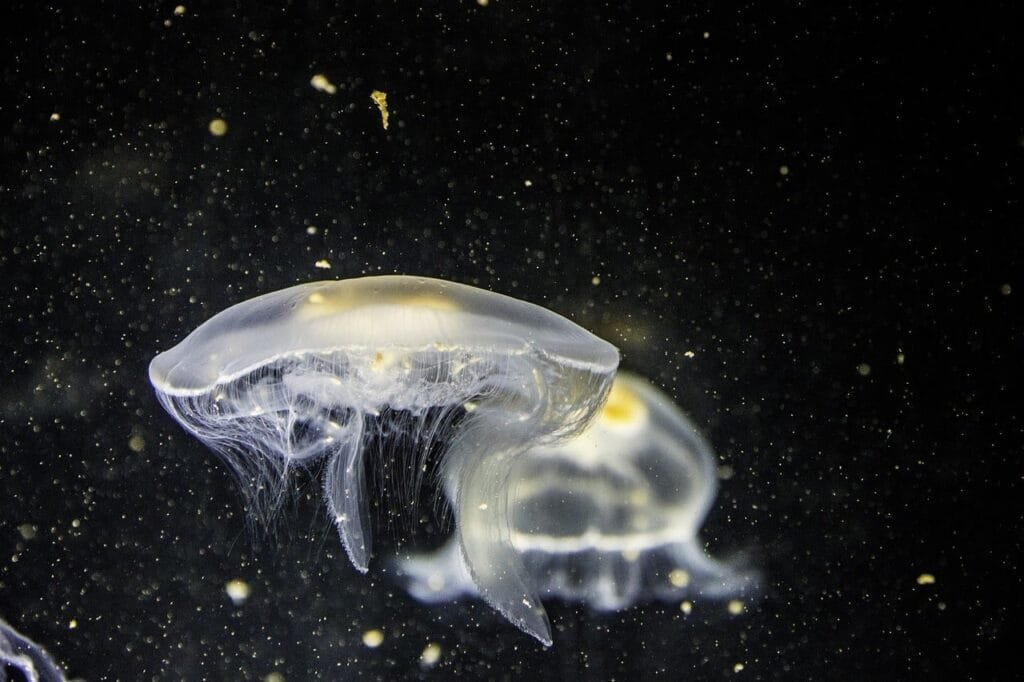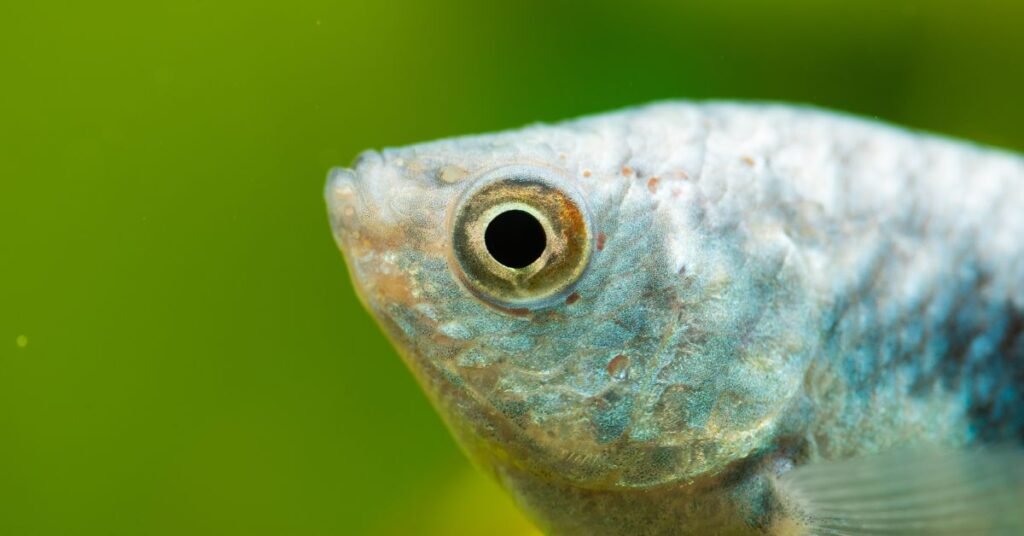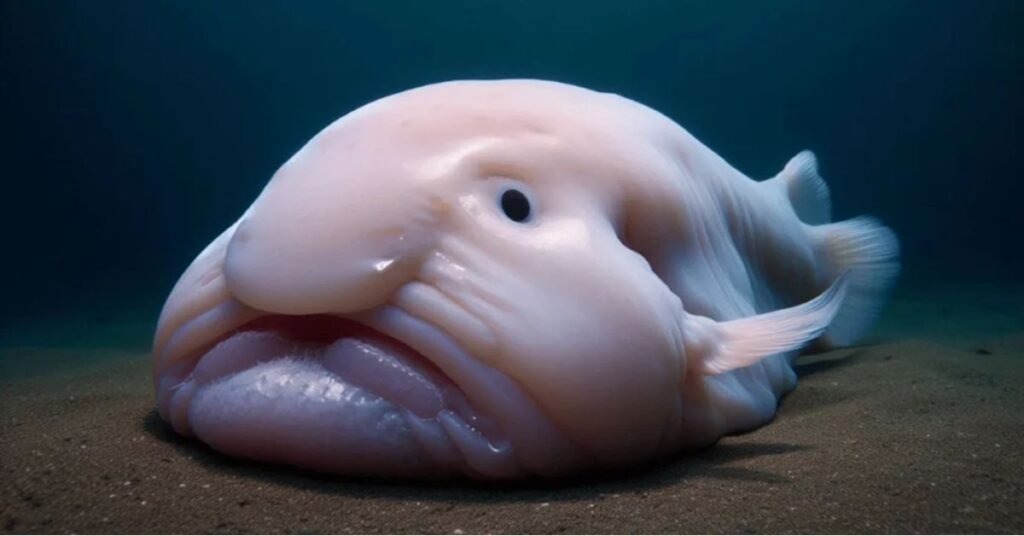All species of fish in the world have eyes. Whether an animal or fish has big or small eyes, all creatures have eyes. But fish is everyone’s favorite food, and the eyes of this fish work especially underwater. Fish eyes are finely tuned organs that have evolved through genealogy like other vertebrates, mammals, amphibians, reptiles, and birds.
In this article, I will discuss fish eyes’ structure, functionality, and complexion. So, let’s learn about fish eyes. Please stay with us.
Table of Contents
Do Fish Sleep at Night?
Yes, fishes sleep at night like humans and other animals. Also, scientists have said that most fish have regular schedules.
Fish move during the day and rest at night. Animals with eyelids can close their eyes, but fish don’t have eyelids, so they can’t close their eyes. Some fish species are most active at night and rest during the day.

At rest, their activity is slower, and they may show changes in body position.
During sleep, fish take shelter in safe places that feel secure from predators. These areas include dense tree canopies, caves, crevices, etc. Fish are reactive when resting or sleeping, so they can sense changes in light and vibrations in the water.
Do Fish Blink?
No, fish don’t blink. They don’t need to. Blinking in humans keeps the eyes moist—but fish live in water, so their eyes stay naturally hydrated. Most fish also lack eyelids, though sharks have a protective membrane (nictitating membrane) that slides across the eye when needed.
Fish Vision
Fish eyes are finely tuned organs that have evolved through genealogy like other vertebrates, mammals, amphibians, reptiles, and birds. Fish hunt in the aquatic world and protect themselves from predatory animals through their keen eyesight. Fish lenses are usually round, but some species have exceptionally elliptical lens shapes.
However, like the human eye, the fish eye comprises some components. e.g., Lens, Cornea, Iris, Retina and Optic nerve. Most species of fish have color vision due to the presence of optic nerves. Some species can see ultraviolet colors, while others are more attracted to polarized light.
How Do Fish See at Night
Fish eyes have scotopic and photocopy vision. Dry cells help the fish see in low light (scotopic) and dry cells in bright light (photopic). The ability of fish to observe and navigate at night varies greatly. This depends mainly on their species and environment.
General vision of fish
Most aquarium fish cannot see in complete darkness. They depend on ambient light. The eyes of fish, other than those of aquarium fish, adapt to their environment. Some fish have good low-light vision due to specialized retinas with multiple layers of rod cells, which increase sensitivity to dim light.
Deep-sea fish
Deep sea fish often depend on bioluminescence ability for light. Some fish also have adaptations such as photophores to produce their light.
Sensory Aids
Beyond sight, fish use other senses, such as the lateral line, to detect vibrations in the water. This helps them navigate in low-light conditions and find food.
Nocturnal Fish
Nocturnal fish become active at night. These fish hide during the day and come out when it gets dark. They use the available light to find food.
Key points about fish night vision
- Rod cells: Fish eyes often contain more rod than cone cells, which are better suited for low-light vision.
- Tapetum lucidum: This reflective layer behind the retina acts like a mirror, sending light back through the photoreceptor cells for a second chance to be detected.
- Species variations: Different fish species have adapted their vision based on their habitat, with deep-sea fish having the most advanced low-light vision capabilities.
Anatomy of a Fish Eye
Fish eyes share similarities with human eyes but differ in key ways due to the underwater environment:
Cornea: Almost flat in most fish because water and cornea have similar refractive indices.
Lens: Spherical and denser, allowing better focusing underwater.
Retina: Contains both rod and cone cells to detect light and color.
Pupil: Usually fixed and non-dilating, unlike humans.
Tapetum Lucidum: A reflective layer in some fish, improving vision in low light—similar to a cat’s eye shine.
Structure of fish eyes
Fish eyes are broadly similar to those of other vertebrates, notably the tetrapods (amphibians, reptiles, birds and mammals, all of which evolved from a fish ancestor).
Light enters the eye at the cornea, passing through the pupil to reach the lens. Most fish species have a fixed pupil size, but elasmobranchs (like sharks and rays) have a muscular iris, which allows pupil diameter to be adjusted. Pupil shape varies and may be, e.g. circular or slit-like.
In addition, Lenses are usually spherical but can be slightly elliptical in some species. Compared to terrestrial vertebrates, fish lenses are generally more dense and spherical.
In the aquatic environment, there is no significant difference in the refractive index of the cornea and the surrounding water (compared to air on land), so the lens has to do most of the refraction.
What is fisheye in the skin?
Fisheye is a type of wart that appears as bumps or protrusions on the skin. Its leading cause is the Human papillomavirus HPV. It is also rough in texture and may have brown or sometimes yellowish grains surrounded by some black dots. It can grow anywhere on the body, especially the hands and feet.
Fisheye disease
Fisheye disease is a rare genetic disorder that causes the corneas to become cloudy. It’s also known as partial lecithin-cholesterol acyltransferase (LCAT) deficiency.
Symptoms
Gradual clouding of the corneas, which usually begins in adolescence or early adulthood
Small greyish dots of cholesterol (opacities) across the corneas
Decreased contrast sensitivity
Causes
- Mutations in the LCAT gene
- This gene provides instructions for making the LCAT enzyme, which removes cholesterol from the blood and tissues.
How do fish see humans?
Fish see humans as blurry, moving shapes with limited color perception due to their wide field of vision, positioned eyes on the sides of their head, and the way light refracts underwater; they can primarily detect movement and changes in light, and while some species can see color, their vision is likely to be less vibrant than a human’s, with some fish even being able to see ultraviolet light that humans cannot.
Fish see humans as blurry, moving shapes with limited color perception due to their wide field of vision, positioned eyes on the sides of their head, and how light refracts underwater; they can primarily detect movement and changes in light, while some species can see color.
Their vision is likely to be less vibrant than a human’s, with some fish even being able to see ultraviolet light that humans cannot.
How fish see underwater
Fish see underwater using eyes adapted to their aquatic environment, focusing light through a spherical lens and moving it to adjust focus. They have a wide field of vision and can see color, including ultraviolet, due to specialized cones in their retinas. Additionally, they have a tapetum lucidum, a reflective layer, to enhance vision in low-light conditions.
- Focusing on Water: Unlike humans who adjust focus by changing the shape of their lens, fish move the lens closer or further from the retina to focus.
- Wide Field of Vision: Fish have a wide field of vision, often 360 degrees, allowing them to see a broader view of their surroundings than humans.
- Color Vision: Most fish can see various colors, including red, blue, green, and ultraviolet. Some fish have an additional cone in their retinas that allows them to detect ultraviolet light, which can be helpful in their environment.
- Low-Light Vision: Deep-sea fish have eyes with more rods (light-sensitive cells) than shallow-water fish, enabling them to see in dim light. The Tynemouth Aquarium blog says they also have a tapetum lucidum, a reflective layer behind the retina, which helps them see in low-light conditions.
Deep Sea Fish Adaptations
Deep sea fish have big eyes to retain as much light as possible in the dark. Some fish have binocular eyes, which help them mark prey as opposed to the light coming from above. They use the bioluminescence ability to produce their light to communicate and find food in the dark.
General vision of fish
Most aquarium fish cannot see in complete darkness. They depend on ambient light. The eyes of fish, other than those of aquarium fish, adapt to their environment.
Some fish have good low-light vision due to specialized retinas with multiple layers of rod cells, which increase sensitivity to dim light.
Adaptations of Fish Eyes
There is an amount of sunlight in surface waters up to about 200 meters (660 feet). But the light becomes not enough as you go deeper. This low-light environment produces special adaptations, especially in the eyes of deep-sea fish. This adaptation also helps the fish find the most minor amounts of light from other animals, such as bioluminescent signals.
Sensitivity and Survival
This adaptation is significant for deep-sea fish for survival. It helps them to find potential mates in the dark deepness of the ocean. These types of fish are susceptible to light and use bioluminescence. It allows these types of fish to thrive in environments where other animals fight to survive.
Four-Eyed Fish
This type of fish doesn’t have four eyes, but this type of fish’s eyes is divided into two parts. One is for seeing underwater, and the other is for seeing above the water. They can see both above and below the surface at the same time. It helps them catch insects on the water’s surface.
Deep Sea Fish Adaptations
Deep sea fish have big eyes to retain as much light as possible in the dark. Some fish have binocular eyes, which help them mark prey as opposed to the light coming from above. They use the bioluminescence ability to produce their light to communicate and find food in the dark.
Can Fish See in the Darkness
When I was learning to swim in childhood, I couldn’t see anything underwater when I opened my eyes while diving. I used to wonder how fish could see underwater at night, which made me curious.
Yes, some deep-sea fish species can see and move in complete darkness. The zone extending from (200-1000) meters is called mesopelagic zone. This area has much less light than other areas. As a result, the fish species that live here have large eyes with large lenses due to genetic and environmental reasons.

Several fish have a specialized tapetum lucidum tissue, which reflects light and improves vision in dim environments.
Just like a cat’s eyes glow in the dark. The optical properties of water also absorb different wavelengths of light to varying degrees. Red and orange colors are found as long-wavelength visible light. Green and blue colors are found as short-wavelength visible light.
Because of this low wavelength visibility, the ocean bottom appears blue.
Only 45% of the solar energy absorbed by a 1-meter-deep ocean remains in clear seawater. Only 16% of light is present at 10m depth and only 1% at 100m depth.
No light penetrates beyond 1000 meters. How much different fish species see underwater depends on this visual presence. Also, they rely on their lateral lines in the darkness to detect movement and vibrations in the water.
How Fish Eyes Adapt to Their Environment
- Light & Color Detection
- Rod cells help fish see in low light (deep sea or night).
- Cone cells allow fish to detect colors useful in shallow or coral reef environments.
- Some reef fish can even see ultraviolet (UV) light, which helps them find prey or navigate reefs.
- Specialized Vision for Survival
- Flatfish (like flounders) migrate one eye to the top of their head to see above while lying on the ocean floor.
- Anable’s (the “four-eyed fish”) can simultaneously see above and below water thanks to a divided eye structure.
- Deep-sea fish have massive pupils and enhanced rods for low-light vision.
Fish Brains and Vision Processing
While human brains heavily rely on vision, fish use a blend of senses. Still, their optic tectum (similar to our visual cortex) is highly developed. Some fish can track movement, solve puzzles, and even recognize faces, showing that vision is deeply tied to fish behavior and intelligence.
Is fish eye good to eat?
Yes, fish eyes are edible and a delicacy in many cultures, particularly in Asia. They are soft, chewy, and crunchy with a rich, umami flavor; some even fit some.
Why are fish eyes considered a delicacy?
- Nutrient-rich: Fish eyes contain nutrients, including omega-3 fatty acids, which can benefit heart, brain, and eye health.
- Unique texture and flavor: They have a soft, gelatinous texture and a rich, umami flavor that many find appealing.
- Cultural significance: In some regions, offering a fisheye to a guest is considered an honors, traditionally reserved for the most special guests.
- Sustainability: By consuming fish eyes, we can also help promote more sustainable fishing practices.
How are fish eyes prepared and eaten?
- Cooking: Fish eyes are typically cooked, not eaten raw.
- Preparation: Chefs often use fish eyes to add flavor and texture to recipes, and some even puree them as a thickening agent for stews and sauces.
- Examples: Fine Dining Lovers notes that fish eyes are braised, sautéed, or even used in cocktails, like the “tuna’s tears” in Japanese pubs.
- Nutritional value: Fish eyes are a great source of omega-3 fatty acids, which benefit heart and brain health.
- Cholesterol: While fish eyes are generally safe to eat, individuals with high cholesterol may want to consume them in moderation due to their high cholesterol content.
Fisheye food recipe
- Fisheye pudding
- Fish eyes salad
- Large tapioca
- Thai-style tomato sauce.
- Fish Eye Soup
Fish eyes are a safe and nutritious food source that can be enjoyed in various ways. They are a delicacy in many cultures and offer a unique culinary experience.
Final Thoughts
Fish eyes are one of evolution’s masterpieces, balancing form and function in a weightless, often lightless world. Whether spotting prey in the deep sea or reading subtle light changes on a coral reef, the fish eye is a wonder tool. Please, enjoy it.



